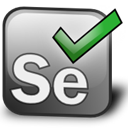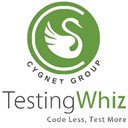Top Rapise Alternative Software for Efficient Test Automation
Rapise is a powerful next-generation software test automation tool known for its open architecture, designed to enhance application quality and accelerate time to market. While Rapise and its free counterpart, Rapise Express, offer robust solutions for testing web applications and APIs, many users seek alternatives for various reasons, including specific feature requirements, platform compatibility, or budget constraints. This article explores some of the best Rapise alternative software options available today, helping you find the perfect fit for your test automation needs.
Best Rapise Alternatives
Whether you're looking for open-source solutions, code-less platforms, or tools with specific integration capabilities, the landscape of test automation offers a diverse range of choices. Here's a curated list of top alternatives to Rapise, each bringing unique strengths to the table.

AutoIt
AutoIt is a free automation tool for Windows that uses a straightforward BASIC-like scripting language. It's an excellent Rapise alternative for automating Windows GUI tasks, simulating key presses, mouse movements, and interacting with window attributes, offering a powerful scripting language for precise control.

Selenium
Selenium is a popular free and open-source suite of tools specifically designed for testing web applications. Available across Mac, Windows, and Linux, it's a strong Rapise alternative for web testing and task automation, especially with its Selenium IDE for recording actions and powerful WebDriver for complex scripting.

Micro Focus Unified Functional Testing
Formerly QuickTest Professional (QTP), Micro Focus Unified Functional Testing is a commercial functional test automation software for Windows. It aims to make test automation more efficient and foster collaboration between developers and testers, serving as a comprehensive Rapise alternative for enterprise-level functional testing.

Screenster
Screenster is a freemium, web-based, and self-hosted platform offering 10x faster UI testing without requiring a single line of code. It's an excellent Rapise alternative for visual UI testing, cross-browser testing, and regression testing, with features like built-in CI, Selenium support, and team collaboration.

TestingWhiz
TestingWhiz™ is a commercial, code-less test automation tool for Windows that can perform end-to-end testing, including Functional, Regression, Database, Big Data, Web UI, and Cross Browser testing. As a Rapise alternative, it stands out for its no-coding required approach and comprehensive testing capabilities.

Watir
Watir is a free and open-source Ruby library available across Mac, Windows, and Linux, designed for automating tests that interact with a browser in a human-like manner. It's a solid Rapise alternative for those comfortable with Ruby and seeking browser automation for their testing workflows.

WatiN
WatiN (Web Application Testing In .Net) is a free and open-source tool for Windows, inspired by Watir. It provides a similar web application testing framework for .NET environments, making it a viable Rapise alternative for developers and testers working with Microsoft technologies.

Telerik WebUI Test Studio
Telerik WebUI Test Studio is a commercial product for Windows with tailored editions for developers and QAs/testers, including a Visual Studio plug-in. It's a comprehensive Rapise alternative for UI and web testing, offering robust features for test automation within a familiar development environment.

PhearJS
PhearJS is a free tool available on Mac, Windows, and Linux that renders dynamic webpages using PhantomJS, returning a JSON object. Offered as both a hosted API and an open-source solution, it's a unique Rapise alternative for SEO and web rendering tasks, especially for single-page applications.
The world of test automation is rich with diverse tools, each offering unique strengths. By exploring these Rapise alternative solutions, you can find a tool that aligns perfectly with your project requirements, technical stack, and team's expertise. Consider factors like cost, learning curve, community support, and specific features to choose the best fit for your test automation journey.